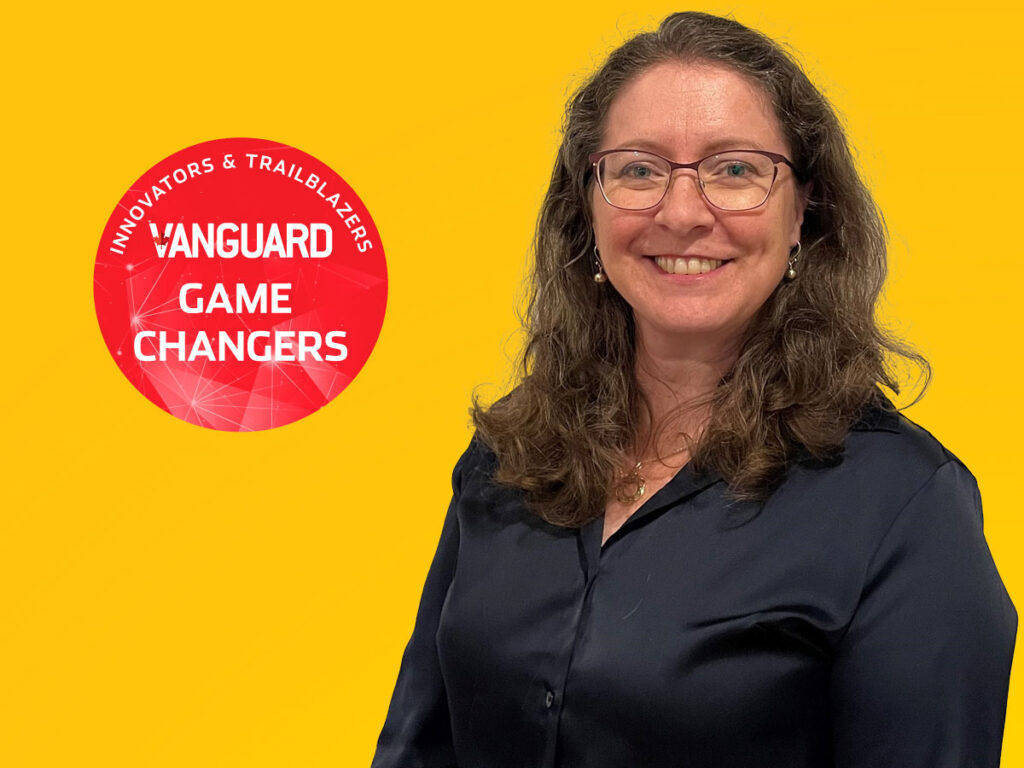Emily Spurling is the Regional Business Director for North America at BMT and one of our August/September Game Changers. She oversees all operations across various sectors, including defence contracts in Canada and the Maritime, Energy, and Infrastructure markets. Emily’s career began in the Royal Australian Navy (RAN) as an engineer, serving in submarines. Her experience in the RAN deepened her understanding of the importance of effective defence capabilities, which naturally led her to continue her career in the defence industry. Emily’s current role is the result of her extensive experience in design, acquisition, and in-service support, making her a key leader in BMT’s North American operations.
How did you start out in this industry and how has it brought you to where you are today?
Initially I wanted to be a zookeeper, realizing that there were few job opportunities I took the next logical step and joined the Royal Australian Navy (RAN) as an engineer and ended up serving in submarines. My time in the RAN instilled in me a strong sense of the importance of an effective defence capability, so when I decided to move on from the RAN, continuing in the defence industry was an obvious choice. My current position is a culmination of the opportunities I was afforded working in design, acquisition and in-service support.
What is your role at your organization today?
I am BMT’s Regional Business Director for North America and as such am responsible for all BMT operations across all sectors in our region. This includes all our defence contracts across Canada as well as our Maritime, Energy and Infrastructure markets across the region.
What was your most challenging moment?
The most challenging moments in my career have all been associated with the problems of my team members. As a young divisional officer in the RAN, I was exposed to a variety of personnel issues, related to both service and personal problems. These really clarified for me that it’s always about the people. Technical problems and business challenges are academic, but they really become challenging when the human element is combined. The most challenging moment which can be shared, was when the CEO at the shipyard I was working in told me that while reducing the major vessel overhaul duration from 5+ years to 2 years was the official target, he wanted me to achieve 21 months. What followed was the most significant volume and speed of change I have ever seen in an organization. It was immensely challenging, especially getting people to commit, but very rewarding. Through the efforts of everyone in the organization, and their willingness to try new things, we succeeded.
What was your a-HA moment or epiphany that you think will resonate most with our reader, tell us that story.
I was serving in a submarine as the Weapons Engineering Head of Department, and we had been having ongoing reliability issues with a significant section of the combat system. The civilian engineers and technical specialists worked tirelessly to help solve the issue and were as emotionally invested in fixing it as the crew. That was when I realized that ‘Industry’ was indeed our partner and the personnel which make up the Defence Industry really did want us to be able to perform our military roles successfully and safely. That clarification of perspective shaped my interactions with them for the rest of my military career and led me to moving to the Defence Industry on my resignation from the RAN. I also think it positively influenced interactions and outcomes.
How has innovation become engrained in your organization’s culture and how is it being optimized?
As an Employee Benefit Trust (EBT), BMT is in an excellent position to make decisions on its operations which benefit our employees and customers. We are not driven by the need to return a dividend to shareholders or manage our share price. This enables us to invest in our team’s ideas where we see potential. Over the years we have implemented an Innovation Hub and continue to improve how we gain visibility of, assess and fund ideas. By creating a safe space to explore ideas and where failure is ok, we are seeing an increase in the number and quality of ideas which we can bring to the market and use to improve our offerings to our customers.
What is a habit that contributes to your success?
When engaging with people I put effort into seeing things from their perspective. I also start from the position that individuals are trying to do their best. (I can always change my mind if the evidence warrants it). I have found that taking this approach develops positive and constructive relationships.
What is your parting piece of advice?
This is a team sport. Exhibit the behaviours you want to see from others. Strive to shine and do your best but never forget that you are always part of a team.
